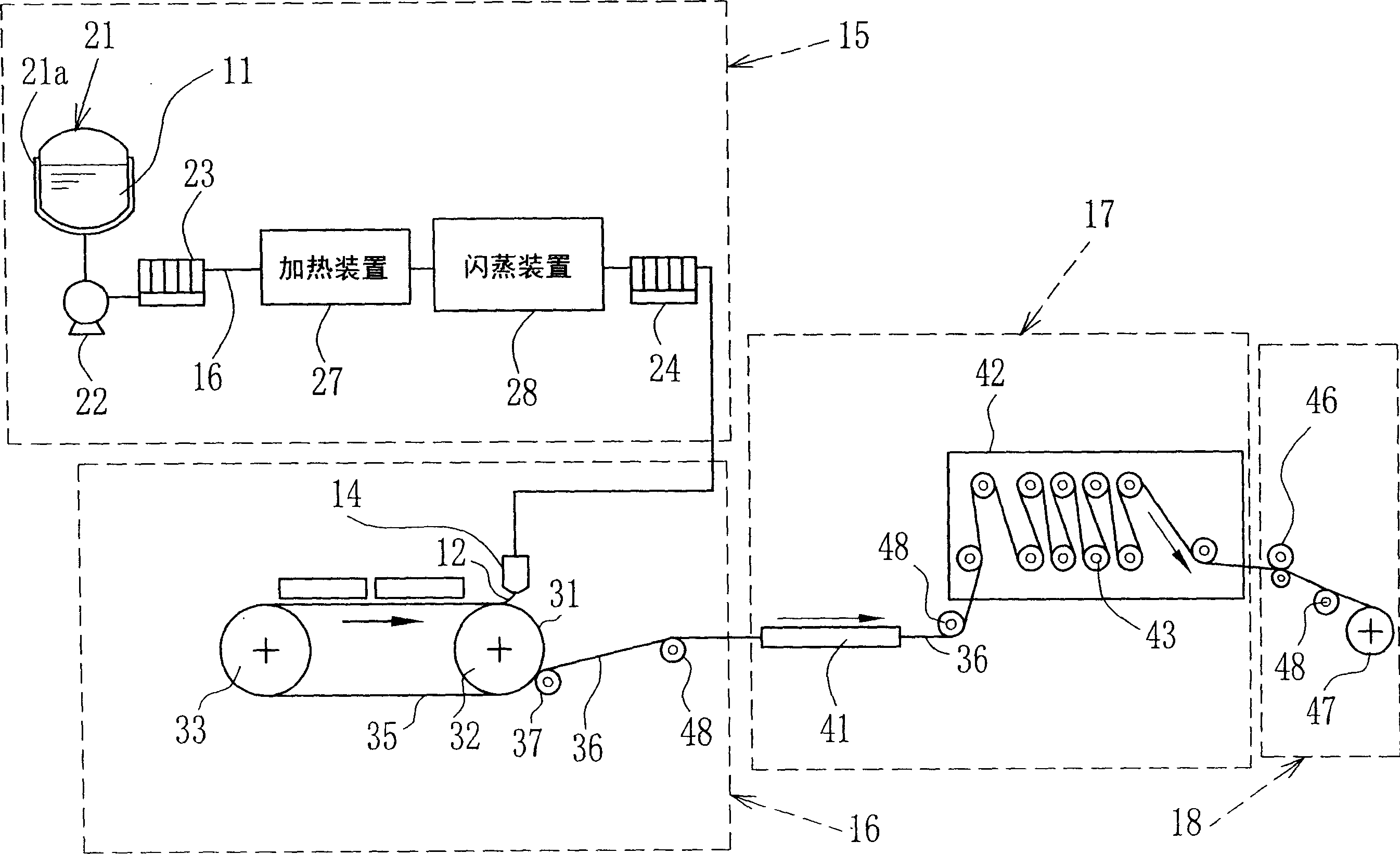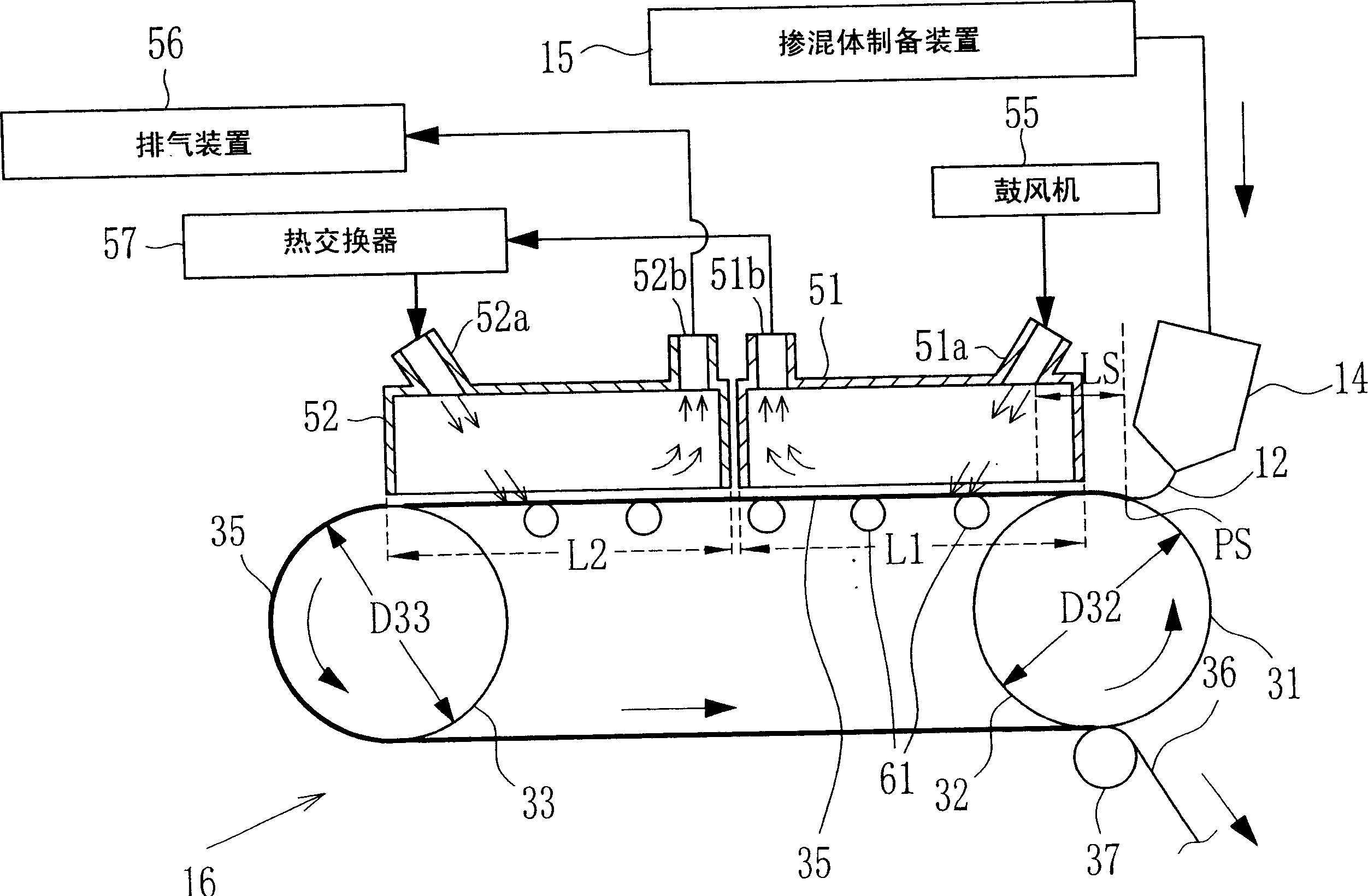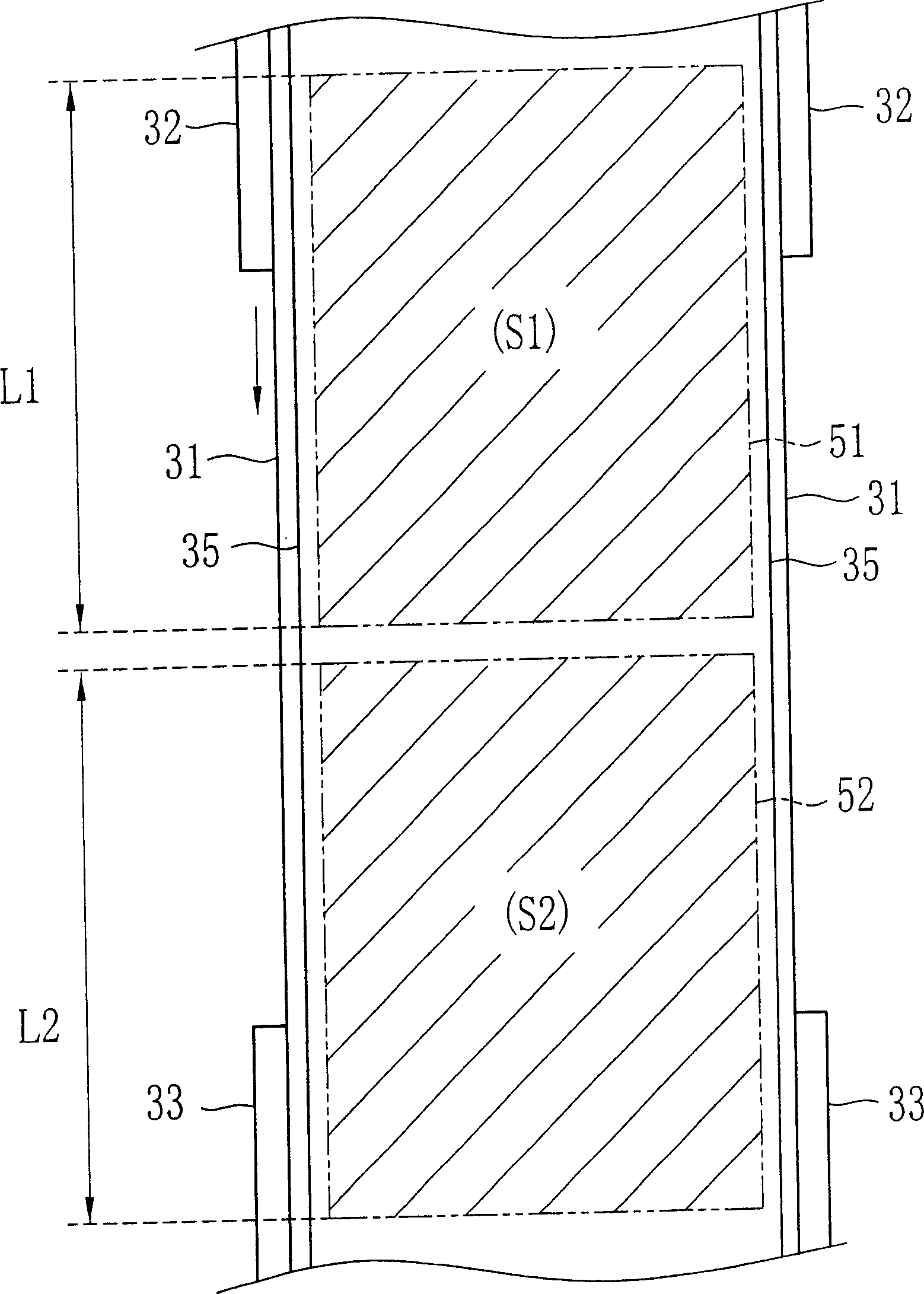Method of producing film from polymer solution
A polymer solution and thin film technology, applied in flat products, instruments, polarizing elements, etc., can solve the problems of finished film thickness uniformity, high precision control, viewing angle change, etc., and achieve the effect of excellent optical performance
- Summary
- Abstract
- Description
- Claims
- Application Information
AI Technical Summary
Problems solved by technology
Method used
Image
Examples
Embodiment 1
[0110] Blend A was prepared having the following ingredients. Note that the raw material of cellulose triacetate is wood pulp, and UV-absorbers I, II, and III are 2-(2'-hydroxy-5'-tolyl)benzotriazole, 2,2'-hydroxy-4- Methoxybenzophenone, and 2(2'-hydroxy-3',5'-di-tert-butylphenyl)-5-chlorobenzotriazole.
[0111] Cellulose triacetate 18.90 parts by weight
[0112] (The degree of acetylation is 60.7%, the degree of polymerization is 315, the degree of substitution of the acetyl group at the 6-position is 0.94, and the average particle diameter is 0.5mm)
[0113] Triphenyl phosphate (TPP) 1.00 parts by weight
[0114] 0.60 parts by weight of biphenyl diphenyl phosphate (BDP)
[0115] 0.50 parts by weight of diethyl phthalate
[0116] UV-absorber I 0.10 parts by weight
[0117] UV-absorber II 0.20 parts by weight
[0118] UV-absorber III 0.30 parts by weight
[0119] Silica particles 0.05 parts by weight
[0120] (Particle diameter 15nm, Mohs hardness about 7)
[0121] Pa...
Embodiment 2
[0136] (Preparation of Blend B)
[0137] Dichloromethane was used in place of the silica particles to prepare Blend B.
[0138] (Preparation of Blend C)
[0139] The content of cellulose triacetate was reduced to 17.0% by weight, and dichloromethane was added corresponding to the reduction in the content of cellulose triacetate. Blend C was thus prepared.
[0140] use Figure 7 The casting equipment shown is used for casting. The same parts and components are provided in the same number. The casting speed was 40 m / min and the casting die 14 was provided with a supply zone 14a for co-casting. In addition, a third drying unit 53 is provided downstream of the second drying unit 52 and at a position from above the second drum 33 to below the first drum 32 . Blends B and C are cast onto a belt 31 so that blend B can form a 35 μm thick main layer in the dry film and blend C can form a 2 μm thick front surface layer (the surface layer facing the drying unit ) and a 3 μm thick ...
Embodiment 3
[0144] Blend D was prepared with the following ingredients. Note that the raw material of cellulose triacetate is wood pulp and cotton linter with a mass mixing ratio of 3:7. In addition, the viscosity of a 6 mass % dichloromethane solution with a water content of 0.2 mass % was 305 mPa·s. Furthermore, the UV-absorbers IV, V, VI are in turn 2,4-bis(n-octylthio)-6-(4-hydroxy-3,5-di-tert-butylaniline (anylino))-1,3, 5-triazine, 2(2'-hydroxy-3',5'-di-tert-butylphenyl)-5-chlorobenzotriazole, and 2(2'-hydroxy-3',5'-di-tert-amyl Phenyl)-5-chlorobenzotriazole. Note that the water content of methyl acetate, acetone, methanol, and ethanol used as solvents is at most 0.2% by weight.
[0145] Cellulose triacetate 16.00 parts by weight
[0146] (The degree of acetylation is 2.83, the viscosity average degree of polymerization is 205, and the degree of substitution of the acetyl group at the 6-position is 0.96)
[0147] Triphenyl phosphate (TPP) 0.50 parts by weight
[0148] 1.50 par...
PUM
| Property | Measurement | Unit |
|---|---|---|
| width | aaaaa | aaaaa |
| length | aaaaa | aaaaa |
| surface roughness | aaaaa | aaaaa |
Abstract
Description
Claims
Application Information
 Login to View More
Login to View More - R&D
- Intellectual Property
- Life Sciences
- Materials
- Tech Scout
- Unparalleled Data Quality
- Higher Quality Content
- 60% Fewer Hallucinations
Browse by: Latest US Patents, China's latest patents, Technical Efficacy Thesaurus, Application Domain, Technology Topic, Popular Technical Reports.
© 2025 PatSnap. All rights reserved.Legal|Privacy policy|Modern Slavery Act Transparency Statement|Sitemap|About US| Contact US: help@patsnap.com



